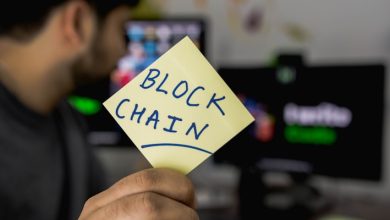The Role of Tokenization in Unlocking New Asset Classes

- Understanding the concept of tokenization
- Exploring the potential of tokenization in financial markets
- How tokenization is transforming traditional asset classes
- Challenges and opportunities in the tokenization of assets
- Regulatory considerations for tokenizing new asset classes
- The future of investing through tokenization
Understanding the concept of tokenization
Tokenization is a process that involves converting real-world assets into digital tokens that can be traded on a blockchain. This concept is revolutionizing the way we think about investing, as it allows for the fractional ownership of assets that were previously out of reach for many investors. By breaking down assets into smaller, more affordable units, tokenization opens up new opportunities for diversification and access to a wider range of asset classes.
Through tokenization, investors can now gain exposure to assets such as real estate, fine art, and even intellectual property, all through the purchase of digital tokens. This democratization of investing has the potential to level the playing field and bring new participants into the market. Additionally, tokenization offers increased liquidity and transparency, as assets can be traded 24/7 on blockchain platforms, providing real-time pricing information and reducing the need for intermediaries.
Overall, understanding the concept of tokenization is essential for anyone looking to explore new investment opportunities and diversify their portfolio. By embracing this innovative technology, investors can unlock access to previously inaccessible asset classes and create a more inclusive and efficient financial ecosystem.
Exploring the potential of tokenization in financial markets
Tokenization has emerged as a transformative technology in financial markets, offering new opportunities for investors to access a diverse range of asset classes. By representing real-world assets as digital tokens on a blockchain, tokenization enables fractional ownership, increased liquidity, and enhanced transparency. This innovative approach has the potential to democratize investing, allowing a wider range of individuals to participate in previously inaccessible markets.
One of the key advantages of tokenization is its ability to unlock new asset classes, such as real estate, fine art, and commodities, which were traditionally illiquid and difficult to trade. By converting these assets into tokens, investors can buy and sell fractions of ownership, making it easier to diversify their portfolios and manage risk effectively. This increased accessibility can attract a broader base of investors, driving demand and creating new opportunities for growth.
Moreover, tokenization offers benefits beyond traditional asset classes, including increased efficiency, reduced transaction costs, and improved security. Smart contracts, which are self-executing contracts with the terms of the agreement directly written into code, streamline processes and eliminate the need for intermediaries, resulting in faster and more secure transactions. This automation can reduce the risk of fraud and error, providing investors with greater peace of mind when trading digital assets.
As the financial industry continues to evolve, the potential of tokenization in unlocking new asset classes is becoming increasingly apparent. By leveraging blockchain technology to digitize and tokenize a wide range of assets, investors can benefit from increased liquidity, transparency, and efficiency. As more traditional assets are tokenized, the landscape of financial markets is set to undergo a significant transformation, opening up new opportunities for investors and reshaping the way assets are bought and sold.
How tokenization is transforming traditional asset classes
Tokenization is revolutionizing the way traditional asset classes are bought, sold, and traded. By converting real-world assets into digital tokens, investors gain access to a more efficient and transparent market. This process allows for fractional ownership, making it easier for individuals to diversify their portfolios and invest in assets that were previously out of reach.
One of the key benefits of tokenization is the increased liquidity it provides. Assets that were once illiquid can now be traded 24/7 on digital exchanges, opening up new opportunities for investors. Additionally, tokenization reduces the need for intermediaries, lowering transaction costs and streamlining the investment process.
Real estate, art, and even commodities are now being tokenized, giving investors a wider range of assets to choose from. This democratization of investment opportunities is leveling the playing field and allowing more people to participate in markets that were once reserved for the wealthy.
As the technology behind tokenization continues to evolve, we can expect to see even more asset classes being tokenized in the future. This shift towards digital ownership is changing the way we think about investing and opening up a world of possibilities for both investors and asset owners alike.
Challenges and opportunities in the tokenization of assets
Tokenization of assets presents both challenges and opportunities for investors and the financial industry. On one hand, tokenizing assets can provide increased liquidity, fractional ownership, and easier transferability of assets. This can open up new investment opportunities and unlock previously illiquid assets for a wider range of investors. However, there are also challenges to consider.
One of the main challenges is regulatory compliance. As the tokenization of assets is a relatively new concept, regulations around it are still evolving. Ensuring compliance with existing financial laws and regulations, as well as navigating the complexities of cross-border regulations, can be a hurdle for tokenization projects.
Another challenge is the potential for security breaches and fraud. As assets are tokenized and stored on blockchain networks, they become susceptible to hacking and other cyber threats. Ensuring the security of these digital assets and protecting investors’ funds is crucial for the success of tokenization projects.
Despite these challenges, the opportunities presented by tokenization are vast. By leveraging blockchain technology, tokenization can revolutionize the way assets are bought, sold, and traded. It can streamline processes, reduce costs, and increase transparency in the financial industry.
Overall, the tokenization of assets has the potential to democratize investing, making it more accessible and inclusive. As the technology continues to mature and regulations catch up, we can expect to see a significant increase in the tokenization of various asset classes in the coming years.
Regulatory considerations for tokenizing new asset classes
When considering the tokenization of new asset classes, it is crucial to take into account the regulatory considerations that come into play. Tokenization involves representing real-world assets digitally, which can raise various legal and compliance issues. It is essential to ensure that the process complies with existing regulations to avoid any potential legal pitfalls.
Regulatory considerations for tokenizing new asset classes can vary depending on the jurisdiction in which the assets are being tokenized. Different countries have different regulatory frameworks governing the tokenization of assets, so it is important to understand the specific requirements of the relevant jurisdiction.
One of the key regulatory considerations for tokenizing new asset classes is securities laws. In many jurisdictions, assets that are tokenized may be classified as securities, which can trigger additional regulatory requirements. It is important to determine whether the assets being tokenized fall under the definition of securities and to comply with the relevant securities laws.
Another important regulatory consideration is anti-money laundering (AML) and know your customer (KYC) regulations. Tokenization can introduce new risks for money laundering and terrorist financing, so it is crucial to implement robust AML and KYC procedures to mitigate these risks. Compliance with AML and KYC regulations is essential to ensure the legitimacy of the tokenized assets.
Overall, regulatory considerations play a significant role in the tokenization of new asset classes. By understanding and complying with the relevant regulations, tokenization can unlock new opportunities for investors and issuers alike while minimizing legal risks.
The future of investing through tokenization
Investing through tokenization is revolutionizing the financial landscape by offering new opportunities for diversification and access to previously untapped asset classes. Tokenization enables fractional ownership of assets, allowing investors to participate in markets that were once out of reach. This democratization of investing is bringing liquidity to traditionally illiquid markets, such as real estate, art, and private equity.
Tokenization also provides increased transparency and security through blockchain technology, ensuring that ownership rights are recorded immutably and transactions are executed efficiently. By digitizing assets into tokens, investors can trade them on secondary markets seamlessly, opening up a whole new realm of possibilities for portfolio management and risk mitigation.
The future of investing through tokenization looks promising as more traditional financial institutions and regulators recognize the potential benefits of this innovative technology. With the ability to tokenize a wide range of assets, from stocks and bonds to commodities and collectibles, investors can now diversify their portfolios like never before. As the tokenization ecosystem continues to evolve, it is likely to attract a broader range of investors seeking to capitalize on the liquidity, transparency, and accessibility that tokenization offers.



